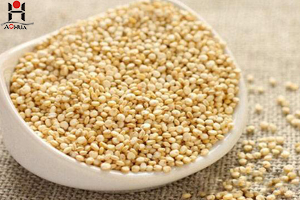- Whatsapp:+86-13949074923
- Email: AoHua@aohuascreeningmachine.com
Products list
inquery

Overview of quinoa
2022-04-09
Overview of quinoa
Quinoa is a one-year-old herb of the quinoa family.

It is native to the Andes of South America and has been cultivated for more than 5000 years.
Quinoa is a "whole grain" with high nutritional value, its protein content is about 16%, higher than that of rice and corn, and comparable to that of wheat, and it contains all essential amino acids, which are easily absorbed by the body. At the same time, quinoa is rich in vitamin B, vitamin C, vitamin E and minerals, as well as saponins, polysaccharides, flavonoids and other bioactive substances. In addition to its outstanding nutritional value, quinoa is also resistant to cold, drought, barrenness and salinity, which is of great importance for the sustainable development of agroecosystems, and it is rich in phytochemicals that have the potential to improve the nutritional level of people and prevent the occurrence of many diseases. However, there are few reports on quinoa in China. With the rising demand of domestic consumers for health and wellness, quinoa as a "health food" has a very broad market prospect.
In recent years, due to its outstanding nutritional value, quinoa has been recognized by many nutritionists and recommended as a specialty crop after the 1990s, and health products made from quinoa have become a hot commodity worldwide. Tibetan Academy of Agriculture and Animal Husbandry, China
The Tibetan Academy of Agriculture and Animal Husbandry and the Tibetan Academy of Agricultural Sciences started the experimental cultivation of quinoa as early as 1987, and then successfully planted it on a small scale in Tibet, and now it is grown on a small scale in China, in Gansu, Qinghai, Shanxi, Shaanxi and Zhejiang.